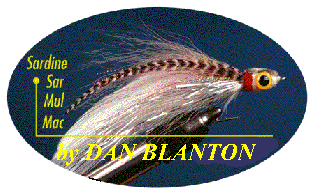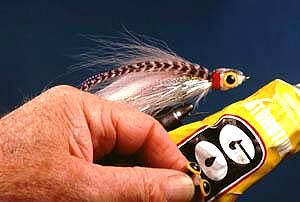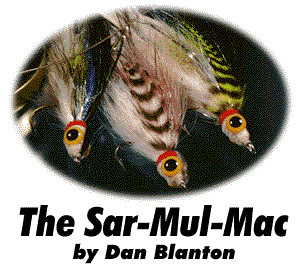3. Tie on three, long, white saddle hackles, curved
sides inward, slightly tented over the tail, along
each side, forming the wing which simulates the
body of a baitfish. Now tie on the underside of the
hook (throat), a medium bunch of white bucktail,
half the length of the tail, which forms the belly of
the fly, giving it some girth.
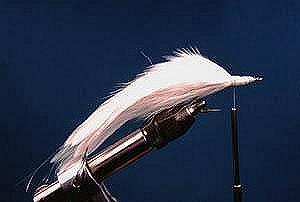
4. Tie in a medium bunch of pearl gray bucktail for
topping, producing back color. You now tie in along
both sides where the gray bucktail meets the white
saddles, a shoulder of mauve or hot pink (cerise)
bucktail, as long as the gray bucktail. Over that,
add six to eight strands of wine Crystal flash. Add
side flash, a combination of 15 to 20 strands each
of both silver Flashabou and multi-colored Crystal
flash. It is preferred to layer the silver flash, about
half-to-half. The Crystal flash needn't be as long as
the wing.
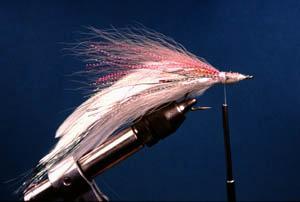
|
5. Tie in along each side as an over-shoulder, one
long grizzly saddle hackle just short of tail-length.
Now tie in a loop of medium gray chenille which
will later be brought forward, nymph-case style, to
form the head topping. Next, take two to three
turns of small, red chenille at the same point the
loop is tied in and tie off. This will simulate gills.
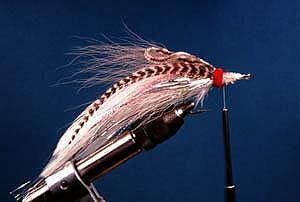
6. Starting just back of the hook eye, tie in a length of
small, white chenille and wrap to the red chenille
and back (two layers) and tie off. Bring gray
chenille loop over the top and tie it off, forming a
small, neat tie-off point. Cement.
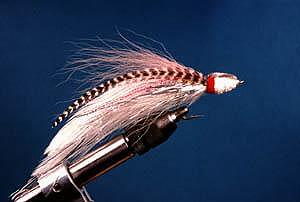
|

